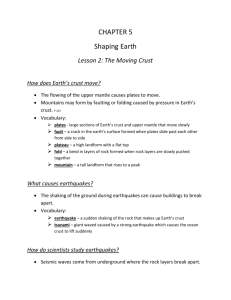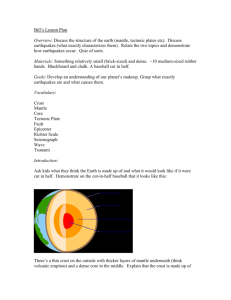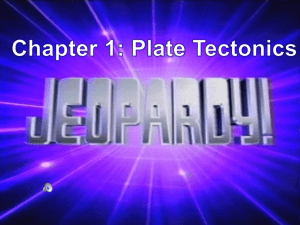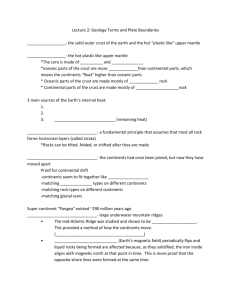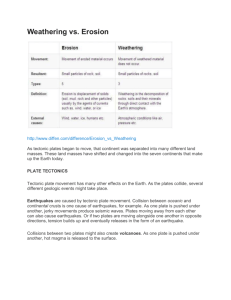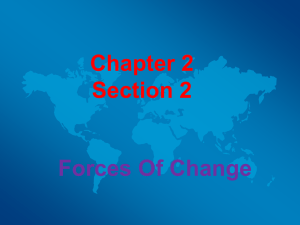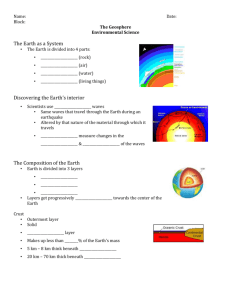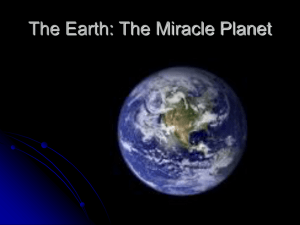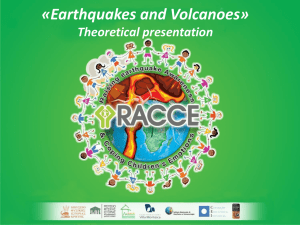Earth`s Structure: *6,000 km down to reach the center of the Earth
advertisement
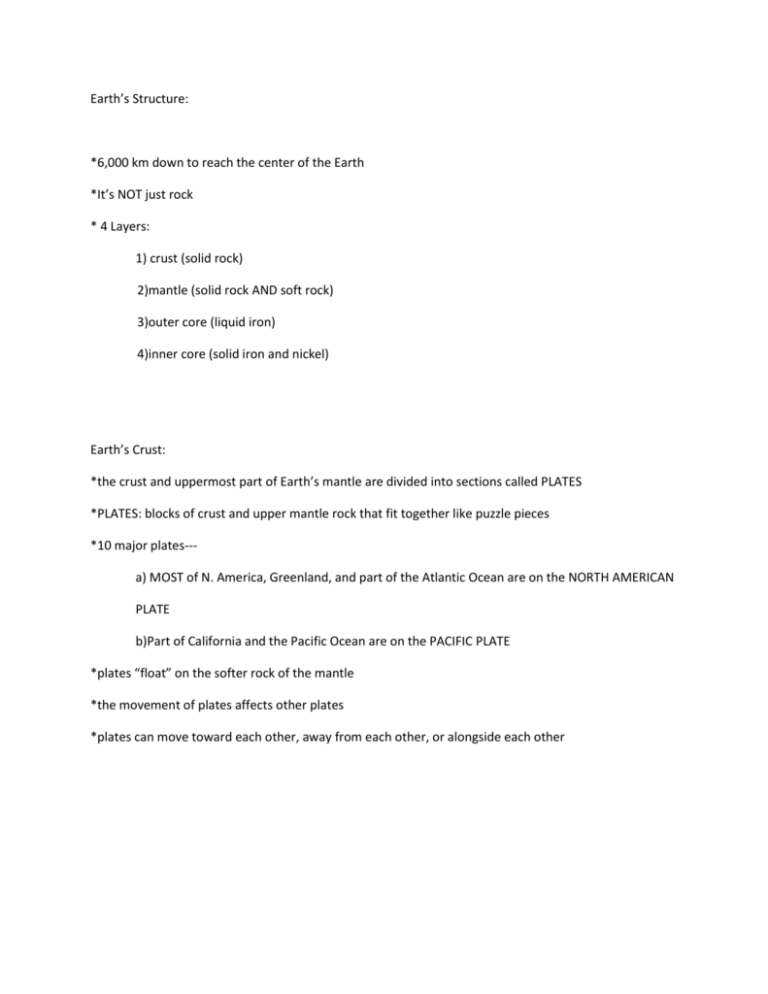
Earth’s Structure: *6,000 km down to reach the center of the Earth *It’s NOT just rock * 4 Layers: 1) crust (solid rock) 2)mantle (solid rock AND soft rock) 3)outer core (liquid iron) 4)inner core (solid iron and nickel) Earth’s Crust: *the crust and uppermost part of Earth’s mantle are divided into sections called PLATES *PLATES: blocks of crust and upper mantle rock that fit together like puzzle pieces *10 major plates--a) MOST of N. America, Greenland, and part of the Atlantic Ocean are on the NORTH AMERICAN PLATE b)Part of California and the Pacific Ocean are on the PACIFIC PLATE *plates “float” on the softer rock of the mantle *the movement of plates affects other plates *plates can move toward each other, away from each other, or alongside each other Earthquakes: *when 2 of Earth’s plates move suddenly past each other, energy is released (in the Earth’s crust) and the ground shakes *focus: place within the crust where the energy is released during an earthquake *sometimes this release of energy may hardly be noticed, or it may cause lots of damage *the GREATEST damage likely occurs directly above the focus---called the epicenter *caused by 3 different types of plate movement (together, apart, slide past) * most earthquakes occur along a FAULT---a break in the Earth’s crust **Some faults occur in the middle of plates, but MOST are found near the edges of plates *STRONG earthquakes: plates pushing together or sliding past each other *WEAK earthquakes: plates pulling apart *Scientists classify earthquakes by measuring their MAGNITUDE---amount of energy released **this is reported using the Richter scale 2.0 is too small to be felt….6.0 or higher can cause lots of damage FYI: 1) each increase of 1 on the Richter scale is an increase in strength of about 32 times 2) about 20 earthquakes of magnitude 6.0 or higher occur each year
